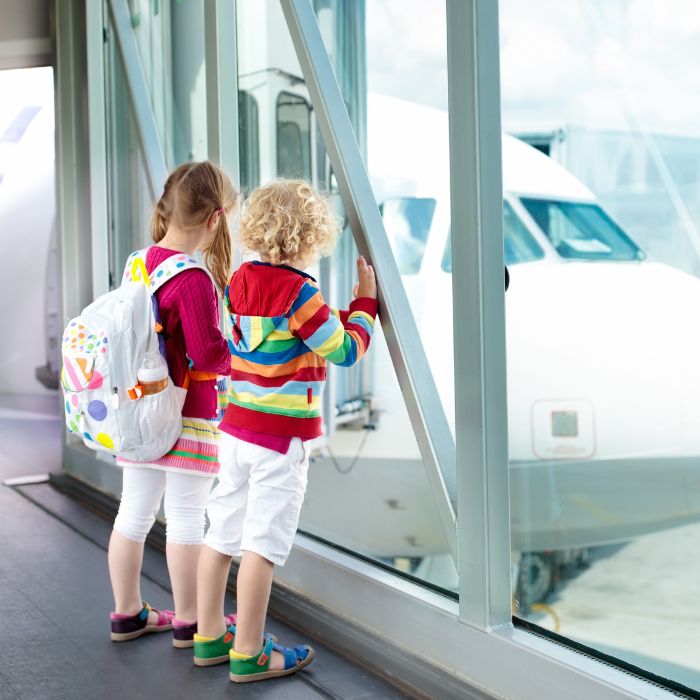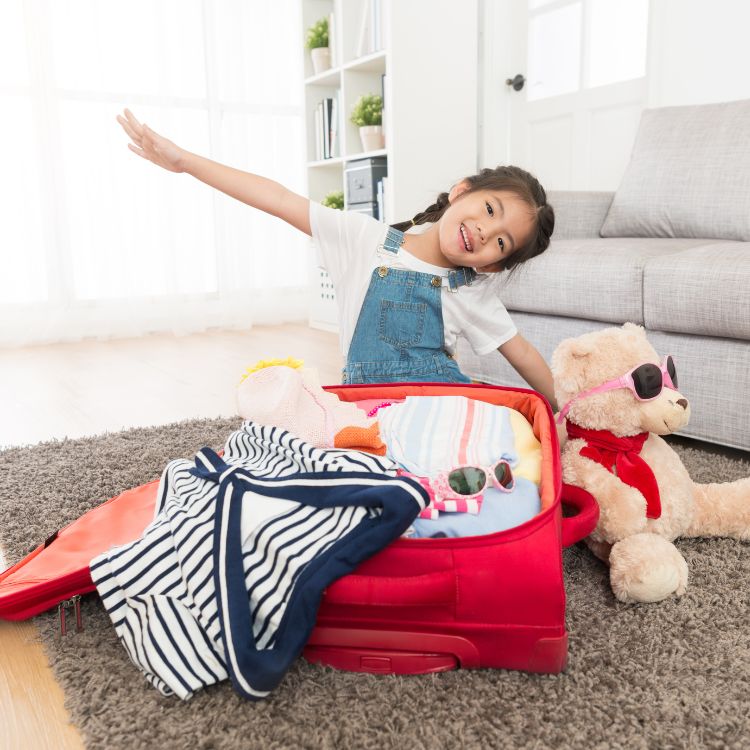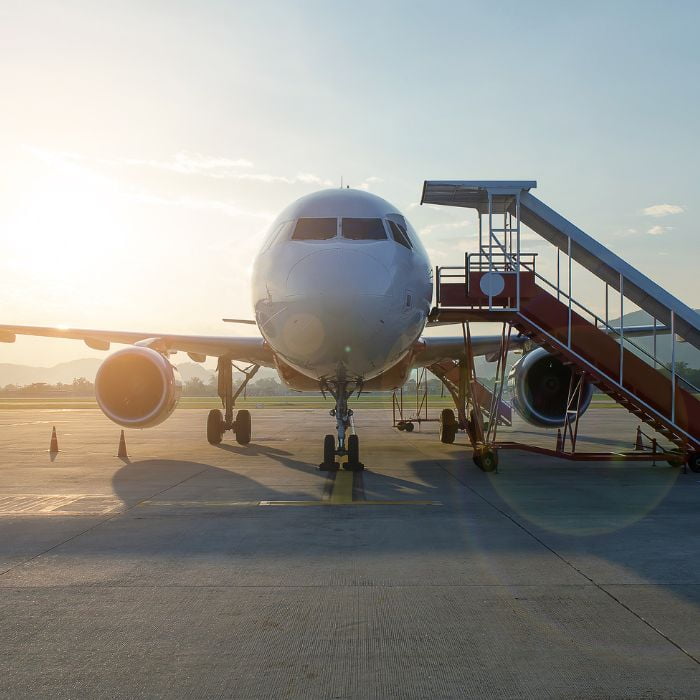
5 Child Friendly Tips for Airline Travel

Your child is about to travel for the first time. Whether alone or with you here are some practical tips to make their journey a safe and successful one. What is the most important thing you can do to ensure successful air travel for your child?
While there isn’t any one thing you can do to be 100% prepared (because variables inevitably present themselves), planning ahead goes a long way toward making any flight a good one.
1. Plan Out What You Are Bringing Beforehand

Sit down with your child (again, whether they are or are not traveling with you) and make a list of things you will need for the trip. Make sure to have a phone that’s charged, a charging cable, a charging bank, hygiene supplies, clothes, spending money, snacks for the flight, etc. Before you leave for the airport, double check that they have packed everything they need for the trip. Try and do this the day before the flight. Chances are you are leaving early in the morning.
The last thing you want are any surprises to your packing right before going to the airport. Another thing to consider is the lack of internet connection on the plane. You can buy wifi packages on the plane, but that might be expensive. The good news is that most apps like Netflix (and podcast apps like Spotify) allow you to download content, so you can use the apps when there’s no connection or you’re in airplane mode.
2. Make A List Of The Airport Routine

This list should include leaving early enough to get to the airport. Checking in once you arrive. Going through security at the airport (and what that entails — taking off your shoes, putting down your devices, not having any metal on you, etc.). Waiting to board the plane and how we need to be patient as sometimes there are delays. (If your child is traveling alone they will most likely have a Passenger Support Specialist who will guide them through this process).
When it’s time to board we don’t want to run people over. Explain how the airline has a process for how they allow passengers on the plane. Once we get on the plane, explain how we are going to store our carry-on luggage in overhead compartments. This is why it’s good to take a few small things we need (tablets, gaming devices, books, etc.) out before we put our luggage away for the flight. This list doesn’t need to be written out, it be done with pictures, social stories, or any other way that the child prefers.
In fact, role playing this traveling situation can also be helpful. You could simulate the day of travel by packing suitcases, driving to the airport, and then discussing what happens after that. Going through security, finding your gate for the flight, what to do if your flight is delayed (a common occurrence during travel especially during the “holiday” months), boarding the plane, finding your seat, things you can do during the flight to pass the time, landing, etc. All of this can help make the actual experience easier and less stressful for everyone.
3. Contacting TSA for support

Through a program called “TSA Cares” people who are neurodiverse (or who might have other conditions that could make checking-in and flying anxiety inducing) can find the assistance and support they need to get through the process. There are Passenger Support Specialists that can help travelers navigate the rigors of airport security screenings, flying, landing and getting where they need to go once they are off the plane.
People can get a card or make their own notification cards to present to the TSA when they arrive at the airport. This will let TSA of any special accommodations that are needed. Travelers are advised to call 72 hours before their trip and the phone number is (855) 787-2227. You can also find out more information about assistance to travelers at TSA.gov.
4. Taking Off And Moving Through The Air

Taking off can be a bit startling, especially if a young passenger has never flown before. Let them know that the take off portion of a plane ride only lasts a few minutes. You can even put a timer on this if that visual will help them see how quickly time is moving. Assure them that once the take off ends, the actual air travel will often feel similar to riding in a car.
Let them know that, just like car travel, there are some bumps in the road. Planes experience this via turbulence (which occurs when they move through forceful wind currents in the sky), but oftentimes that doesn’t last too long. The pilot does their best to position the plane in the sky to avoid these moments. As we move through the flight, encourage your child to read a book, play games on their devices, and watch the content that they’ve pre-downloaded. Another thing your child can do is take a nap so they will be rested once the plane lands. Snacks and drinks are available on the plane, and you can also eat the ones you brought for the trip.
5. Landing and Exiting the Plane.

As the plane gets closer to touching down at the airport, it’s a good idea to front-load your child. Let them know that their ears might hurt a bit as the plane begins its descent to your destination. Explain that when the wheels of the plane touch the runway, it might get bumpy for a few minutes. Let your child know that the pilots responsible for your flight have done this many times. As the plane taxis around the runway, explain that it’s important to be patient. That even when you exit the plane you need to move slowly and be thoughtful of others. By taking just a little bit of time to prepare your loved ones to fly, that can go a long way toward making the whole experience a successful one.
Final Tips for the First Time Traveler
You can watch a video about flying and everything that entails. YouTube is a treasure trove of information that can show what it’s like to go through security, flying on a plane, what might delay a flight, landing, and what you do once the plane ride is over.
Try visiting an airport in advance. Without a boarding pass you won’t be able to actually go through security and get to the boarding area. However, you can park, walk into the airport, and get to see the hustle and bustle that goes on there. Some airports even offer tours, however, these are usually booked months in advance due to security.
See about taking an airport simulation. This is a great way to get a traveler acclimated to flying. They will visit an actual airport hangar and go through the process of waiting to get on a plane, boarding the plane, and simulating take-off and landing.
Watch the video below to learn more
Suggested Videos
Suggested Articles
What is Autism Sensory Integration?
Discover how Autism Sensory Integration can improve daily life and well-being. Learn more in this article.
Social Skills in Autism - Bakersfield
Join LET’S LAFF Social Skills groups in Bakersfield for autism support. Improve communication, emotional regulation, and friendships through ABA techniques.
Exploring the Role of ABA Therapy in Enhancing Social Skills for Individuals with Autism
Explore how ABA Therapy improves social skills in individuals with Autism through evidence-based principles and effective techniques.


